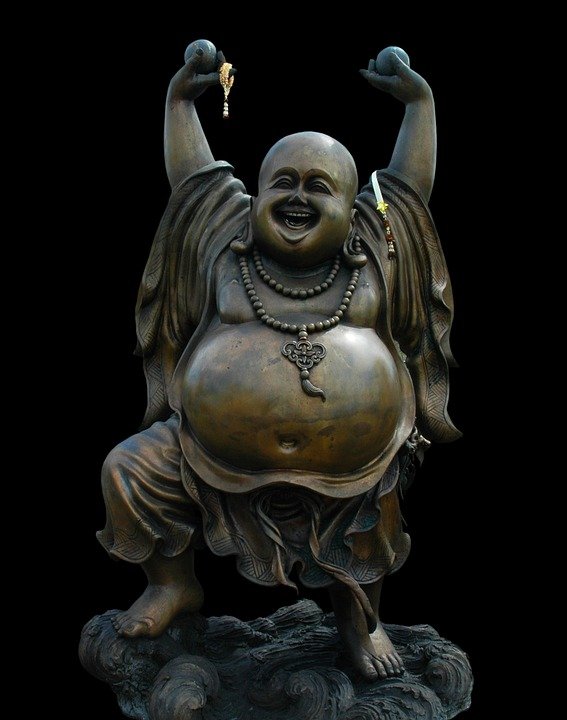

Sharing, connecting, loving, contemplating, inspiring, feeling, discovering, compassion... are actions that expand the capacity of manifestation of the spiritual world and allow not only to link people of cultivated consciousness but to build bridges for the expression of our inner being eager for compensatory and expansive experiences.
It is, therefore, more than interesting, satisfactory, that we move to investigate, reflect and share our perception on relevant aspects of the recognition, growth, expansion, and expression of spirituality and esotericism, that world so real and so much ours, often intuited rather than experienced and in other cases, neglected or unknown. It is therefore conducive to the energetic activation that the Spiritweb Community offers us with opportunities to create conciliatory links between body, mind, and spirit through an enriching interactive process.
In this sense, @ecotrain invites us to participate in the shared exploration with people who are very committed to this and who have much to contribute and reveal in order to draw back the curtains that many of us still have halfway. It is, therefore, a challenge that is posed in terms of discovery and encounter:
It has always been a challenge to try to squeeze the Spiritual and Esoteric world into the banner of the ecoTrain! Until the characteristics of the Communities arrived, it was not really easy to gather new groups, or even to know who was in them! Now we can all see who is in each group, and I'm really excited about the potential of these more welcoming Steem spaces...So, if you are someone who is interested in the Spiritual, Magical, Mysterious World that we live in, please come and Subscribe to the SpiritWeb Community, and share and connect with us all.
From this perspective, the scene is seen as a space for harmony, recognition and strengthening the bonds between peers with similar interests with different activities, but this week is launched with an entertaining Something To Contemplate, in the best style of EcoTrain with its QOTW, which in this case is the next question:
Why Is It The Buddha Can Laugh?

This question shocked and intrigued me at the same time, one because I don't know many things about Buddha and another because I didn't want to be left in the dark about why I should participate and make my point. So I googled "the laughing Buddha" and found a seemingly light story, but for me, it has great meaning. I don't know if the intention of this exercise has to do with this story, but I will develop my intervention from it:
"There is a story in Japan about Hotei, the laughing Buddha. His whole teaching consisted of laughing. He would go from one place to another, from one market to another, he would stop in the middle of the market and start laughing, and that was his sermon.
His laugh was contagious, it was a real laugh. His whole belly was vibrating with laughter. His whole being was shaking, writhing on the floor with laughter. People who crowded around to see him began to laugh, and the laughter spread like a tide and the whole town shuddered with laughter.
People used to wait for Hotei to come to their villages because he brought such joy that it was a blessing. He never said a word, never. If asked about Buddha, he laughed; if asked about enlightenment, he laughed; if asked about truth, he laughed. Laughter was his only message."Translation from


The miracle of joy

This story led me to reflect on the value of joy with its most natural expression, laughter. I think that the intention of the story is to teach from example and not from complicated sermons about the "crux" of the human spirit.
Mystical experience and possible states of consciousness are related to an inner attitude that transcends the process of assimilation and reaction, assimilation of the proposals and vicissitudes of life and reaction to this according to the state of consciousness, expanding into a state of union with those around us, with the rest of humanity, with everything that exists and with our idea of God or spiritual orientation beyond belief.
When the laughing Buddha answers all the questions with a contagious laugh, he is teaching something that has to do with the attitude, he is sharing his wisdom and at the same time distracting from the setbacks of daily life, from apathy, from the extreme solemnity with which spiritual subjects are treated, without understanding how plain and simple it is to enjoy what we come equipped to solve the hardships that appear in different moments of life. And what better resource than laughter to exteriorize a joy necessary to nourish the spirit with the radiance that comes from it.
Spirituality is joy. No matter what is happening to the person on her path of autocorrection, ascension or descent, he should always be joyful, like a child who tries to do things and feels happy whether he succeeds or not. The most important thing is the effort that he makes and that makes him grow.
There are different ways to create a state where we feel safe and can be happy, but this construction is not done at the moment of a problem because then it is more complex to build a happy reality. Joy must be built from the basis of the state, and this means working on the foundations of personality so that joy can persist at all times.
Many aspects of life-related to human beings can create reserves of joy, although this is not always related to the idea we traditionally have of it. Faith and hope are joy, for example, so if we find support in spiritual guidance, in a religious feeling, in identification with the divine, in nature, in sacred places, in fantasy, in wandering; capable of inspiring and sustaining our state of joy, we will be taking a step towards a safe place within ourselves. If we believe, we can and will do many things because we find grace before the superiority that inhabits us.
So, joy and laughter create a state of grace by which we create for ourselves an armor of acceptance of the times, good and bad, and at the same time of acceptance of the states of being in which negative feelings come to the surface and are capable of sinking us, if not for a cultivated base of healthy joy that makes us invincible when the bad times strike.
Some time ago I read that laughter is sown as a daily routine that teaches us to smile at life. That before we open our eyes we should laugh out loud as if we were laughing at a joke. And, that if we have a hard time getting that kind of laugh out, we should think about what a friend would say if he saw us laughing alone, that's funny. Laughing until it infects our spirit of joy, predisposes us to be happy, to look at the positive, to see the glass half full and not half empty, to soak up good vibes.
When we expand inwardly, we can describe our life as presence. Our consciousness of being is rooted in the present moment, which is the only contact with the flow of life, and everything in life remains present in us, according to our perception.
Therefore, if we are optimistic and value laughter and joy as spiritual tools to live to the fullest, being one with others and with everything, we will find the grace to live happily, despite the difficulties that are never lacking.

Happy-woman by Free-Photos in Pixabay

Conclusion

Then we can associate the laughing face of the Buddha with a state of grace according to which "in bad weather, good face", as a popular saying goes. If we live in harmony with our inner being and profess feelings of joy as a way of interacting with everyone and everything, our world will be better because we will have the ability to seek the positive in life's circumstances, with appropriate values that give meaning to our ever-expanding consciousness, projecting interior beauty, harmony, transparency, joy, and fullness.


27/03/2020

In response to @ecotrain on Introducing Our New Sister Community, SpiritWeb!
If you are interested, find out here





